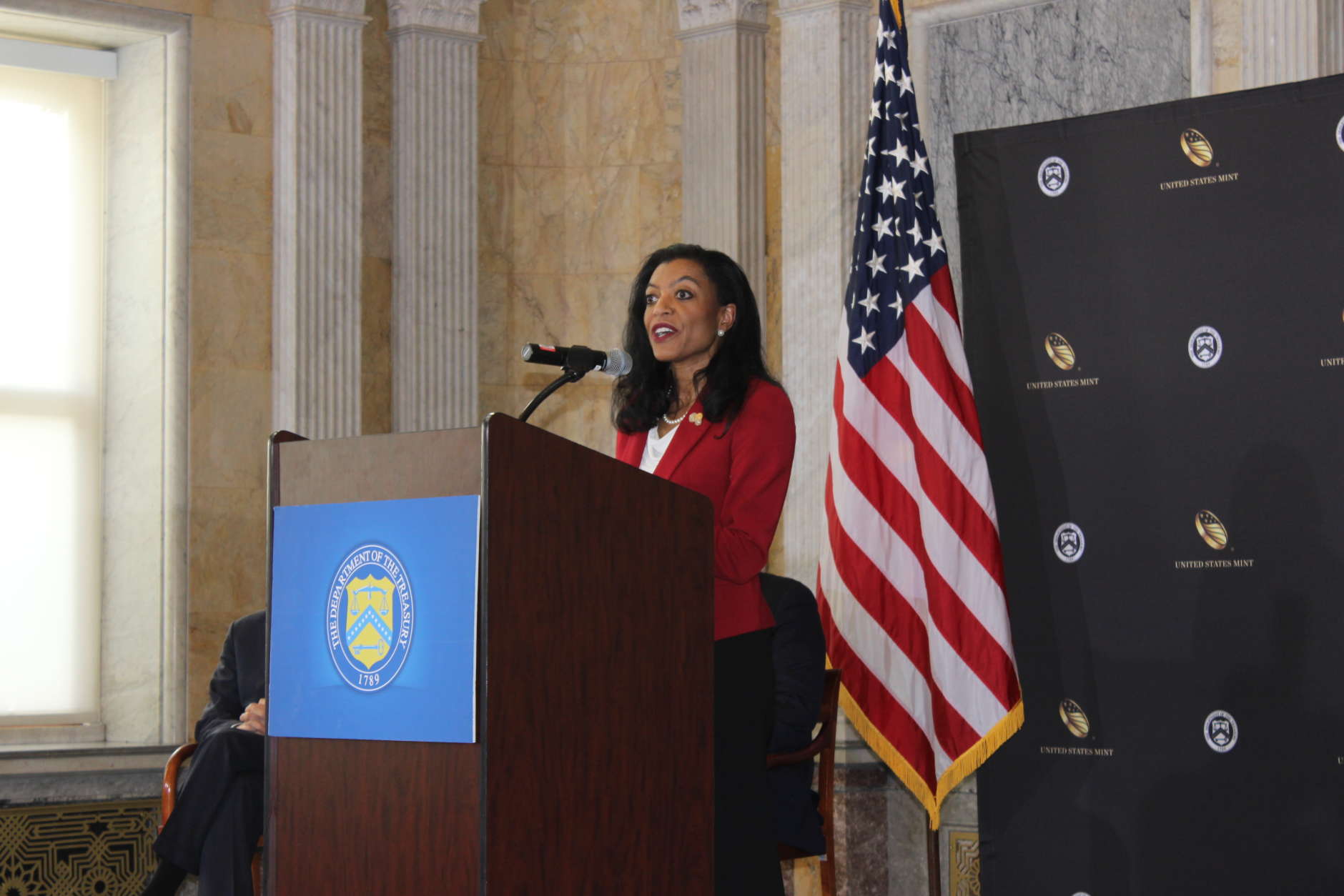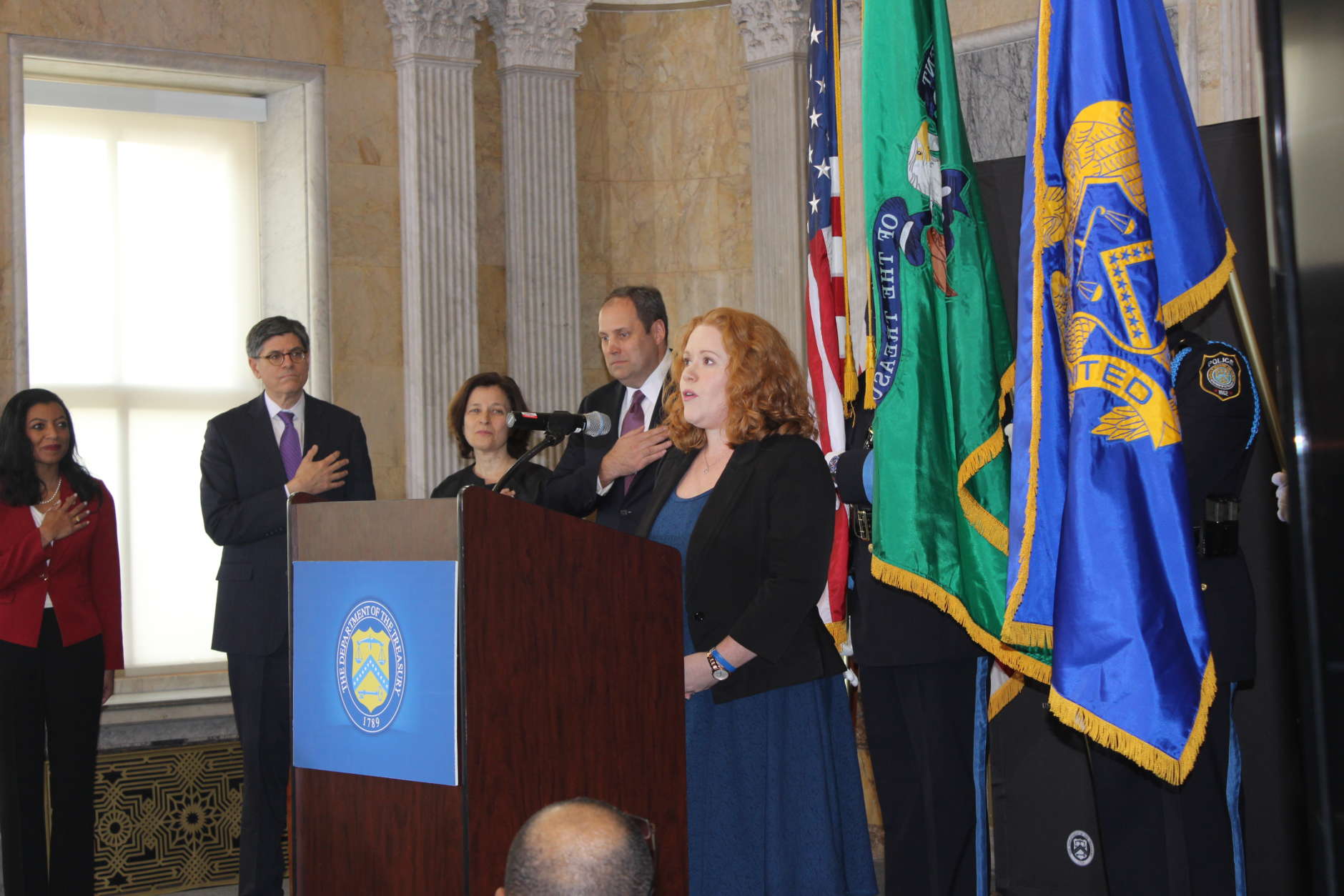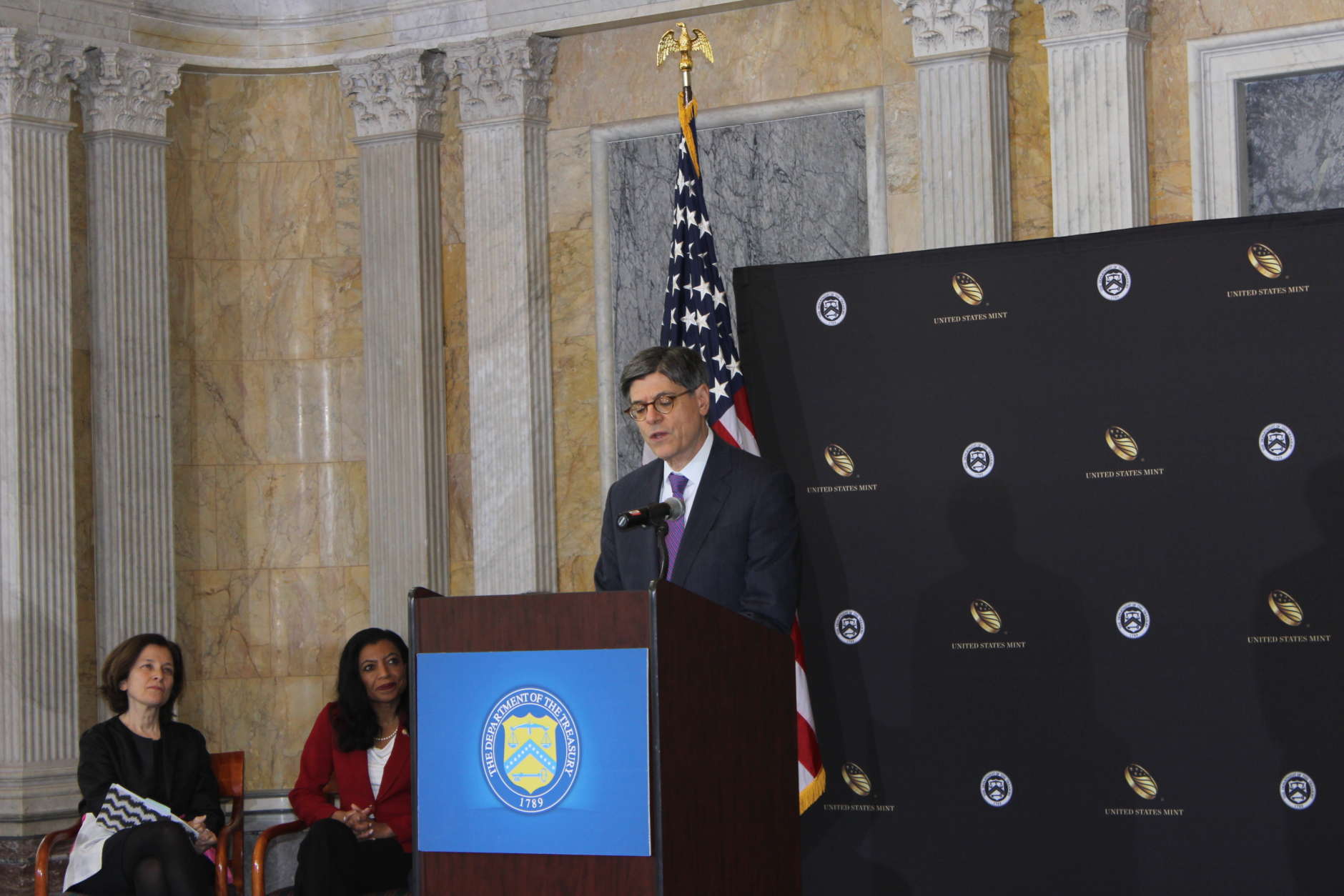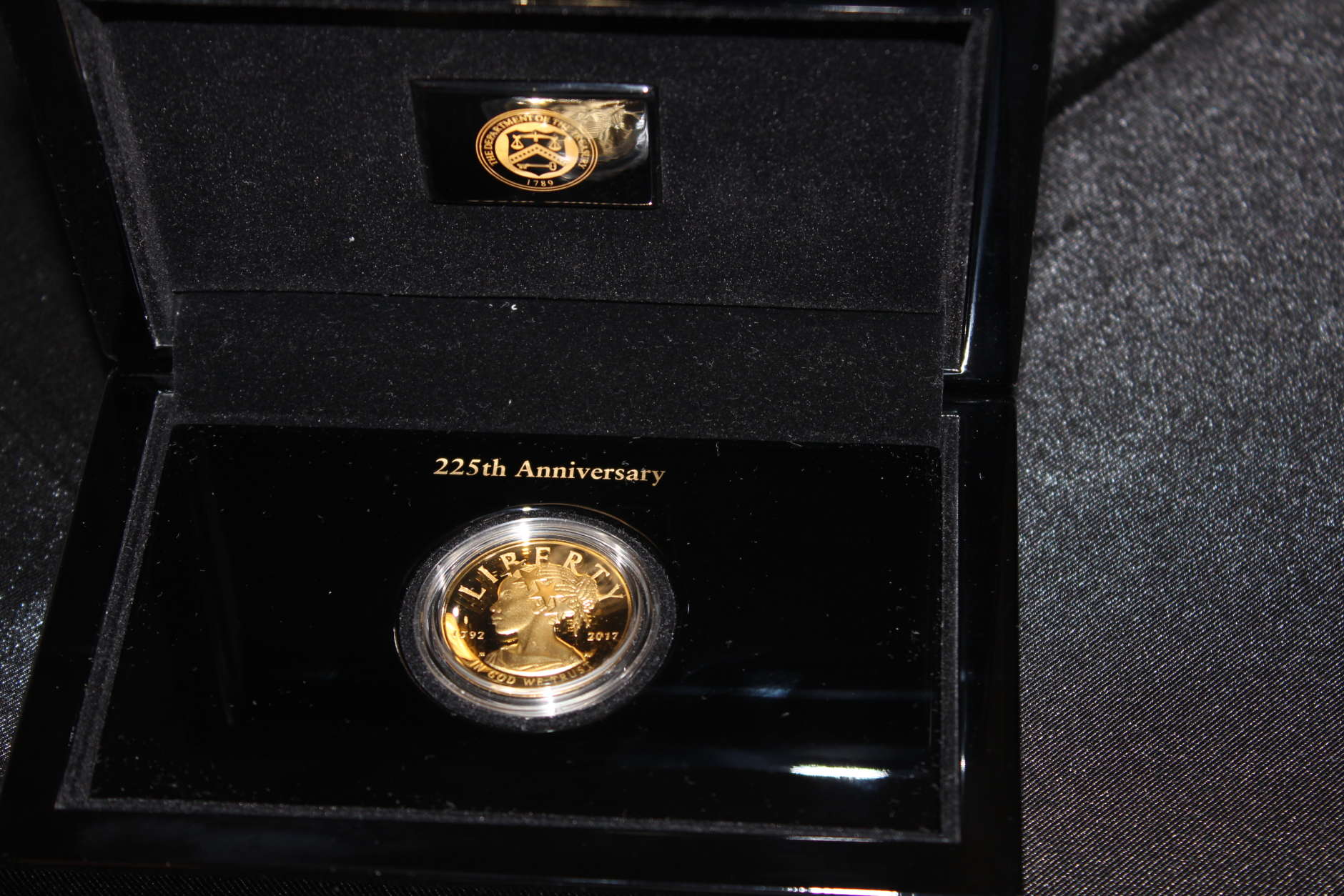
Mint people tend to have a strong sense of their agency. It's old, and it does work we couldn't live without.

Elisa Basnight, Mint chief of staff, addresses the attendees.
(Eric White/Federal News Radio)

Meghan Sullivan, of the Office of Design Management at the U.S. Mint sings the national anthem.
(Eric White/Federal News Radio)

Jacob Lew, Treasury Secretary, speaking at the event.
(Eric White/Federal News Radio)

The 225th anniversary coin, featuring an African-American Lady Liberty on one side and an eagle on the other.
(Eric White/Federal News Radio)
When’s the last time you thought about Pat Nixon? With the arrival of Melania Trump as first lady and the departure of Michelle Obama, first ladies are in the news. But probably few people think much about those in the more distant past, like Mrs. Nixon or, say, Mamie Eisenhower or Bess Truman.
Unless you’re a coin collector.
Did you know you can purchase U.S. currency featuring the first ladies, in the form of half-ounce gold coins from the Mint? The coins have a face value of $10, but the Mint prices them according to the current gold price. The first spouses, as the Mint calls them, go for $790. What the Mint says will be the final issue in the 10-year series depicts Nancy Reagan. I guess Barbara Bush, Hillary Clinton, Laura Bush and Michelle Obama will have to wait. They’re all still alive.
I mention all this because I had a visit to the Mint the other day. Not the Mint precisely, but to the Treasury Department’s fabled Cash Room, where the Mint held a ceremony to unveil a coin commemorating its 225th anniversary as a federal agency. Treasury Secretary Jack Lew even attended to give a speech.
The celebratory coin goes on sale in April. With a content of 1 ounce of pure gold, it will probably set you back $1,500 or $1,600. Mint officials showed off a sample — no touching and armed Secret Service guards were standing by. It’s a surprisingly beautiful coin — so beautiful, if it had a small hole near the top you’d be proud to wear it on a thin chain as a pendant.
I confess I never realized the extent to which the Mint participates in the field of numismatics, issuing all sorts of coins every year that, while legal tender, get snapped up by collectors. These are not the coins you’ll slap down on the counter at 7-Eleven for a coffee and doughnut. Deputy Mint Director Rhett Jeppson says annual sales run to $2 billion.
Behind the coins, the Mint employs a small army of sculptors, die-makers, machine operators and other craftsman to design and manufacture its coins. Talk about cool jobs. Jeppson says the money end of the Mint — pennies, nickels, dimes, quarters etc. — churned out 16 billion pieces last year.
Mint people tend to have a strong sense of their agency. It’s old, and it does unique work we couldn’t live without. Moreover, it participates in a craft the earliest civilized people also did, the production of currency. Even the Bible compilers understood the importance of coinage as a proxy for value freely exchanged among people.
A $1,600 limited edition gold coin stands quite a ways from the lowly copper-plated zinc penny. I hope they never get rid of the penny. Public opinion polls regularly show a majority of Americans favor keeping the penny, the perfectly logical arguments for ending it notwithstanding.
At one time you could buy stuff for a penny. A fuzzy photo in one of my books shows private citizen Harry Truman, home at last, sticking a penny into a parking meter in Independence, Missouri. The Dover Country Store in suburban Massachusetts was one of my regular childhood destinations because of its long counter displaying dozens of varieties of penny candy, each piece literally costing a penny. All those Mary Janes, Red Hot Dollars, Root Beer Barrels, BB Bats.
The smart set like to say we’ll be a cashless society. I doubt it. It runs against human nature. As long as we use paper bills, we’ll need change. As long as we need change, we’ll need the Mint. Dimes will always make good screwdrivers, quarters giveaways to the very young.
So, happy birthday to the Mint, and keep on stamping ’em out, pennies and gold coins.
Copyright © 2025 Federal News Network. All rights reserved. This website is not intended for users located within the European Economic Area.
Tom Temin is host of the Federal Drive and has been providing insight on federal technology and management issues for more than 30 years.
Follow @tteminWFED
